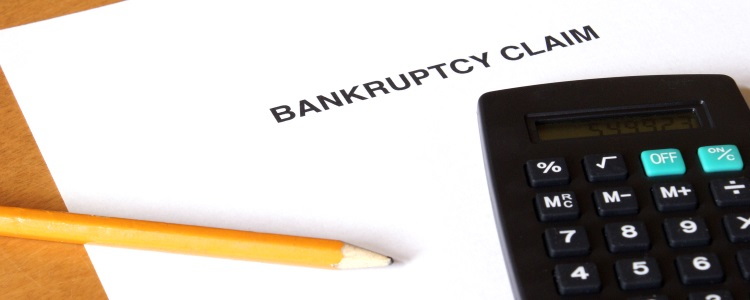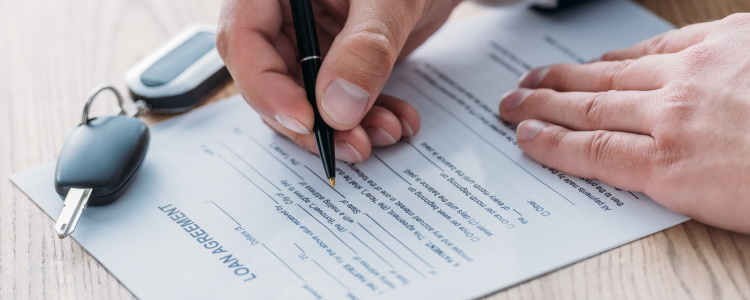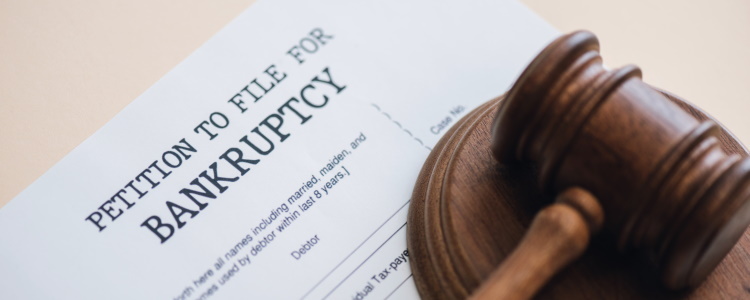Bankruptcy isn't something you should dive into unawares, and there are certain steps you have to take to see if you qualify for one. Determining which type of bankruptcy you're eligible to file starts with a means test. Let's look at how to prepare for this first step, and where to go next.

Preparing For a Chapter 7 Bankruptcy Means Test
What's a Means Test?
If you're not sure which type of bankruptcy you qualify for – Chapter 7 or Chapter 13 – the means test is a good place to start. Even though it's called a test, you shouldn't worry – this isn't like a pop quiz!
 It typically consists of at least one, or more, forms. These forms help you determine if your means (your financial resources) are more or less than what qualifies you to file Chapter 7 bankruptcy.
It typically consists of at least one, or more, forms. These forms help you determine if your means (your financial resources) are more or less than what qualifies you to file Chapter 7 bankruptcy.
In the case of bankruptcy, "means" refers to the amount of income you have available. Income levels vary state-to-state, so to qualify for a Chapter 7 bankruptcy you need to make less than the average income level for a family of the same size in your state.
If you make more than that, you might still qualify for a Chapter 7 bankruptcy, but you have a few more steps to take before you can be sure. If you make less than the median income for your state, you likely qualify for a Chapter 7 bankruptcy, and you're now done with the means test!
Determining Your Chapter 7 Eligibility
Once you fill out the paperwork for the means test and discover that you make more than the median income in your state, you move on to the second step in the test. This step involves determining whether you have enough available income to try and repay your debts.
This part of the means test's job is to calculate how much disposable income you have leftover each month after paying your allowed monthly expenses such as rent, mortgage, and auto loan obligations. If the means test proves that you can afford the necessities, and still have enough left over to attempt making payments on your unsecured debt, such as credit cards, you're not likely to qualify for Chapter 7 bankruptcy.
In this case, you may be eligible for Chapter 13 bankruptcy. Chapter 13 gives you either three or five years to repay your creditor at least a portion of what you owe before any remaining unsecured debt is wiped away in a successful discharge. This differs from Chapter 7 bankruptcy, where your assets are liquidated to recover as much money as possible to repay your debts.
What Does Chapter 7 Mean for Your Car?
If you do qualify for a Chapter 7 bankruptcy, and you have an auto loan, you have a few options. Typically, if you can protect the value of your car with a vehicle exemption you may be able to keep it. However, if your vehicle is worth more than you can exempt you need to decide upfront if you want to keep it and the loan.
Here are the standard options that usually apply to borrowers who are considering Chapter 7 bankruptcy:
Reaffirmation:
Reaffirmation means that you and your lender agree to the terms of your original or renegotiated contract and you agree to continue making payments as scheduled. Since reaffirmation involves signing a new agreement with your lender, you may be able to negotiate the term or your loan at this time.
Often, borrowers that are facing bankruptcy and have a loan that's upside-down can get rid of that negative equity by having the lender agree to accept the current market value of the vehicle, instead of what's owed on your loan. You may even be able to reaffirm your loan if you're behind on payments, by having the lender roll those missed payments into your new agreement.
Reaffirmation isn't available in every situation, or in every state, so it's important you understand whether or not you qualify.
Redemption:
To redeem your car, you pay the lender the current value of the vehicle in one lump sum instead of your loan amount. You can do this whether you're current on your loan payment or not as long as you have the funds to do it. In this case, you can save a lot of money if your car has depreciated a lot or you're in a negative equity position.
Surrender the vehicle:
If you choose not to keep your auto loan when you file Chapter 7 bankruptcy, you must select this option when you file. If this is your choice, you return the vehicle and are released from all liability, on any remaining loan balance.
Need a Vehicle After Chapter 7?
Once you're discharged from your Chapter 7 bankruptcy, typically after four to six months, you should be able to qualify for a new car loan if you need one, but you may need to work with a bad credit lender. Bankruptcy takes a toll on your credit score, which can make it difficult to qualify for vehicle financing through all lenders, but we want to help make it a little easier.
Here at Auto Credit Express, we've gathered a network of special finance dealerships that are signed up with subprime lenders to help people in unique credit situations, such as post-bankruptcy. We've been connecting consumers with local dealerships for over 20 years and we want to help you, too. Get started right now by filling out our fast, free, no-obligation auto loan request form.

Senior Automotive Financing Editor
Meghan has been writing professionally for over 25 years. She is expertly versed in automotive special financing and pricing analysis, having published hundreds of articles on Auto Credit Express and its sister sites, CarsDirect, and The Car Connection. Read more
Suggested Posts For You
Receive Free Updates
Get the latest credit tips, resources and advice delivered straight to your inbox.













